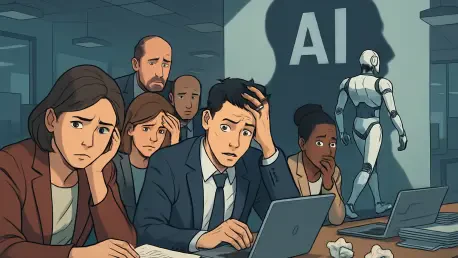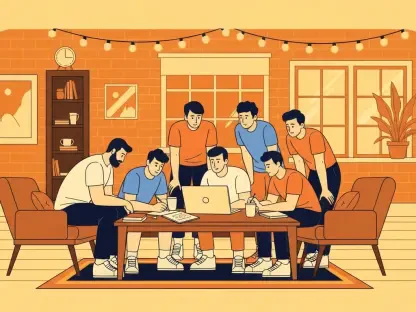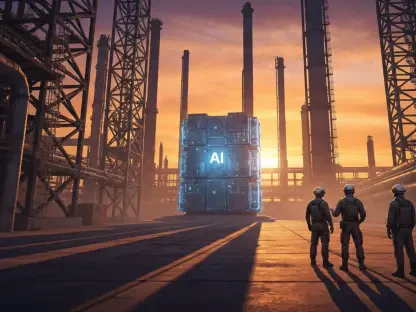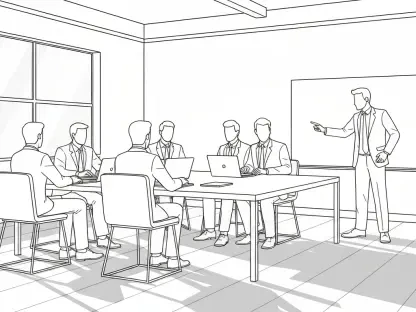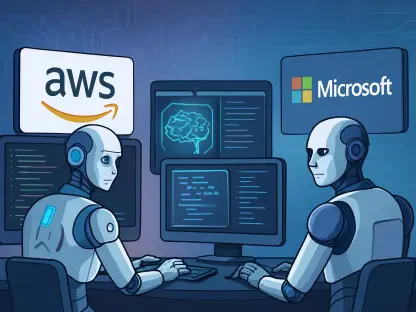What happens when the drive for efficiency today jeopardizes the talent pool of tomorrow? In boardrooms across the globe, artificial intelligence (AI) is hailed as a silver bullet for slashing costs and boosting productivity, but beneath the surface of these celebrated savings lies a troubling reality: the potential erosion of career pathways and human capital. This technology, while transforming industries at breakneck speed, may be planting the seeds of a workforce crisis that could ripple through generations. Dive into this pressing issue to uncover the hidden costs of AI and explore whether short-term gains are worth the long-term risks.
The Stakes Behind AI’s Rapid Rise
The significance of AI’s impact on the workforce cannot be overstated. With 41% of global employers planning to reduce headcounts due to automation within the next five years, starting from 2025, the scale of disruption is staggering. This isn’t just about numbers on a spreadsheet; it’s about lives, communities, and the very structure of economic stability. The sharp decline in entry-level job postings—down 15% year-over-year—signals a shrinking foundation for young workers to build skills and experience. As companies race to capitalize on AI’s promise, the question looms: are these efficiencies creating a future where opportunity is reserved for machines rather than people?
The Double-Edged Sword of AI Efficiency
AI’s ability to streamline operations is undeniable, with many firms reporting significant cost reductions through automation. However, this efficiency comes at a steep price. An average of 491 jobs are lost daily to AI as of mid-2025, a statistic that underscores the human toll of these technological advancements. Companies often frame such cuts as necessary optimization, yet the fallout is becoming clear—55% of those same organizations later express regret over layoffs due to unforeseen operational gaps and cultural losses. This short-sighted focus on immediate returns risks creating a hollowed-out workforce, unprepared for future challenges.
Beyond the corporate sphere, the societal impact is even more profound. Automating roles without investing in reskilling programs shifts the burden onto communities and governments, disrupting the unspoken social contract between employers and workers. Entry-level positions, once stepping stones for career growth, are vanishing, leaving new entrants with nowhere to start. This generational bottleneck threatens to widen inequality, as those without advanced skills or established networks find themselves locked out of the job market entirely.
Hearing the Human Side of Automation
Insights from industry leaders paint a vivid picture of the unfolding crisis. Stephen Dick, VP of Infrastructure Engineering at Paylocity, warns of what he calls “human capital technical debt,” a concept akin to shortcuts in software development that lead to bigger problems later. “There’s a dangerous obsession with ROI that blinds leaders to the human element,” Dick observes. “Over half of companies regret their layoffs, yet the trend persists.” His perspective, drawn from years of guiding tech transformations at global enterprises, highlights a disconnect between profit-driven decisions and sustainable growth.
Stories from the ground level add weight to these concerns. A mid-sized tech company that automated its customer service department initially celebrated a 30% cost reduction. Within two years, however, innovation stalled as the firm struggled with a depleted talent pipeline, lacking fresh ideas and diverse perspectives. Meanwhile, a striking 71% of employees still trust their employers to navigate AI ethically, a statistic that reveals both a window of opportunity and a pressing urgency for responsible action. These voices collectively underscore that the crisis isn’t a distant threat—it’s already reshaping workplaces.
The Ripple Effects of Neglecting Reskilling
The failure to prioritize reskilling amid AI adoption is a glaring oversight at the leadership level. Despite projections that nearly half the workforce will need new skills within three years from 2025, actionable training plans remain scarce. This isn’t merely a technological challenge; it’s a strategic misstep by executives who are quick to deploy automation but slow to support their teams. The absence of robust upskilling initiatives leaves workers stranded, unable to transition into emerging roles or adapt to shifting industry demands.
Moreover, the broader economic implications are sobering. As foundational roles disappear, the pipeline for future leaders and innovators dries up, creating a vacuum that no amount of AI can fill. Small businesses, often lacking the resources for extensive training programs, are hit hardest, further exacerbating regional disparities. This systemic neglect risks not just individual livelihoods but the resilience of entire industries, as the human expertise needed to complement AI dwindles over time.
Charting a Path to a Balanced Future
Finding equilibrium between AI-driven efficiency and workforce sustainability is not only possible but essential. Forward-thinking companies are beginning to match their AI investments with equal funding for training, ensuring employees aren’t left behind as roles evolve. Leveraging AI itself for personalized learning platforms offers another avenue, allowing workers to acquire new skills at a pace tailored to their needs. Such initiatives transform technology from a threat into a tool for empowerment.
Additionally, designing clear career pathways for those displaced by automation can mitigate long-term damage. This involves mapping out transitions into adjacent or emerging fields, supported by transparent communication about job changes. A case in point is a manufacturing firm that, after automating assembly lines, partnered with local colleges to retrain workers for tech-support roles within the same company. By prioritizing people alongside profits, businesses can foster loyalty and innovation, turning a potential crisis into a competitive advantage. These strategies signal a shift toward a future where AI amplifies human potential rather than diminishes it.
Looking back, the journey through AI’s impact on the workforce reveals a landscape of both peril and promise. Leaders who act with foresight by investing in reskilling and transparent practices often find their organizations stronger, with teams equipped to collaborate with technology rather than compete against it. Those who ignore the human element face operational setbacks and cultural erosion, lessons that echo across industries. Moving forward, the challenge lies in committing to actionable steps—allocating budgets for training, embracing AI as a learning tool, and mapping career transitions. By doing so, companies can build a legacy of resilience, ensuring that today’s cost savings don’t become tomorrow’s crisis.
